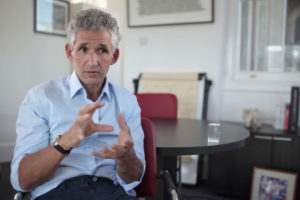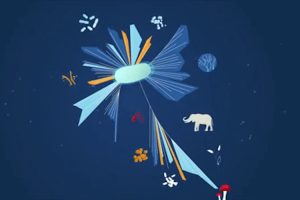Reversible Aging
Geneticist David Sinclair on the aging dogma, SIR proteins, and an efficient way of DNA repair
What are the problems of using only morphology-based phylogenetic trees? What are the currently used model organisms and why other organisms are less suitable for that role? Associate Professor of Organismic & Evolutionary Biology at Harvard University Arkhat Abzhanov speaks on the approaches to understanding the mechanism of morphological changes during evolution.
There’re three major approaches that we take and I think they are the most effective ways to understand developmental mechanisms of evolutionary change. The first one is understanding the nature of morphological change. So first we would like to understand exactly what happened. The second major approach that should be taken, that can be taken is comparative biology. So comparing, looking at embryos, looking at those very structures, which changed morphologically during evolution and see how they are built differently in key species. The first approach should give you some idea about what the primitive condition was, what the starting condition was and what the derived condition, the ending condition was. And if you choose your species correctly, that is, if you have both basal and advanced conditions in the picture by looking at the embryos you should be able to understand what molecular changes took place which correlate with those morphological changes which were discovered during the first approach.
A lot of animals and plants actually evolved very similar features, sometimes identical features in convergence, that is, they evolved them independently, because of the same or very similar selective pressures. So we prefer using molecular trees – trees which are based on molecular information, sequence of DNA – mitochondrial DNA for example, ribosomal RNAs and others, which have independent molecular clocks. So this molecular tree shows you a true relationship between species that you study and then you use morphological information, you can throw it in this molecular tree and that gives you much more accurate understanding of which morphological changes occurred in which direction.
Non-model species are species of animals or plants which we do not and sometimes cannot keep in the lab. They’re too large, they develop too slowly, they’re too rare and so forth. Often they represent interesting evolutionary stories, but they’re just not practical to keep in a laboratory, so we have to use model systems – our laboratory animals such as mice or chickens or zebrafish, which are cheap and one can raise them in a lab, get the embryos on regular basis and manipulate them.

Geneticist David Sinclair on the aging dogma, SIR proteins, and an efficient way of DNA repair

Biologist Tim Spector on the overall weight of our microbes, remembering our natural roots, and the importance...

On the the evolution of the ribosome, the central dogma of molecular biology, and what lies beyond the root of...